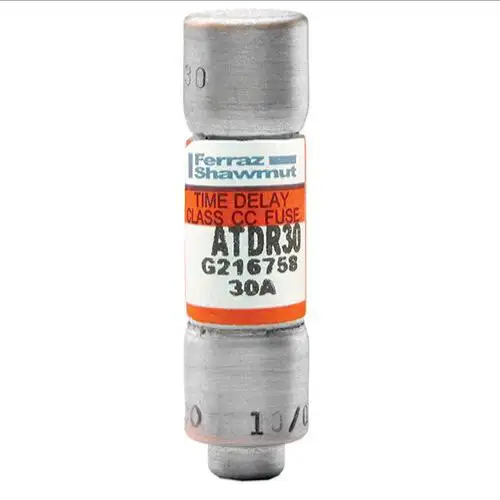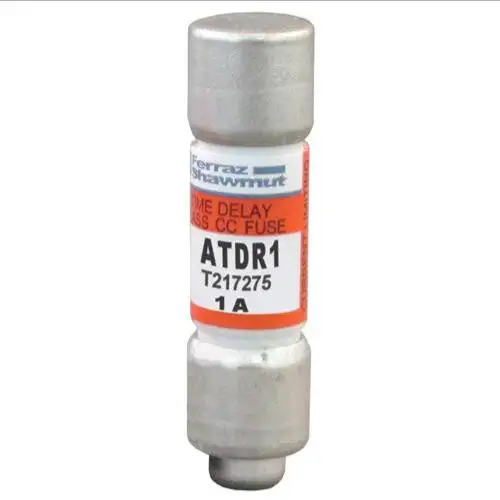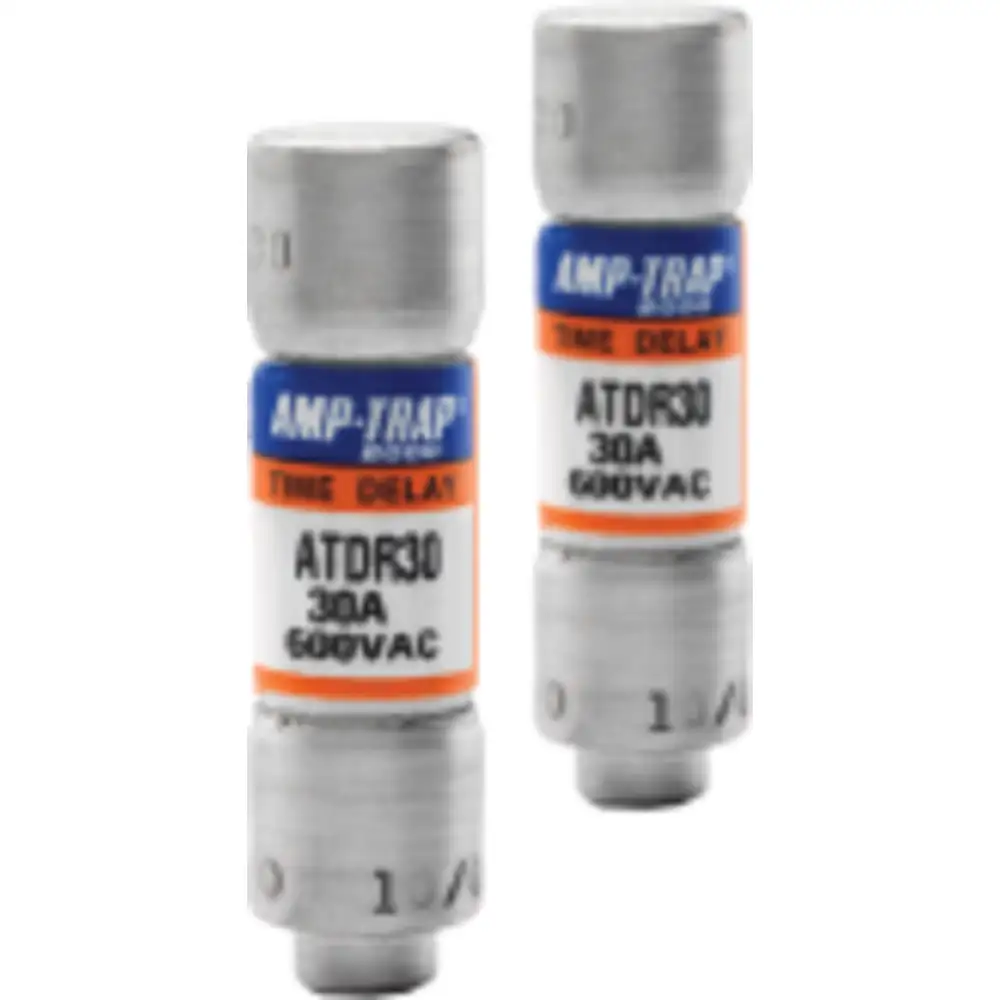Mersen Ferraz ATDR30 time delay fuse protects electrical circuits from overcurrents. It offers a delay in response to overloads, allowing temporary surges without immediate tripping. This fuse is used in industrial and commercial applications to safeguard equipment and prevent damage in motor control centres, panel boards and distribution boards.
Features:
- It offers the high current limiting capability for low peak let-thru current.
- This fuse has a high-grade silica filler to ensure fast arc quenching and optimum current limitation.
- It features a time delay to accommodate motor starting inrush currents without nuisance opening.
- This fuse has improved cycling ability for frequent motor starts / stops without nuisance fuse opening.
- Its fibreglass body provides dimensional stability in harsh industrial settings and the rejection-style design prevents replacement errors when used with recommended fuse blocks.
Frequently Asked Questions:
Q. What are the factors to consider while choosing a Mersen Ferraz time delay fuse?
A. Major factors include current and voltage ratings, time-delay characteristics, application type, circuit protection requirements, environmental conditions, compatibility, safety standards and replacement availability.
Q. What is the interrupt rating (IR) for this ATDR30 time delay fuse?
A. This ATDR30 has an interrupting rating of 200kA for AC and 100kA for DC.
Q. What is the difference between a time-delay fuse and a fast-acting fuse?
A. A time-delay fuse tolerates temporary overcurrents like motor starting surges before tripping, making it ideal for applications with brief current spikes. In contrast, a fast-acting fuse responds instantly to overcurrents, providing immediate protection, which is crucial for precision circuits where rapid fault detection is essential.
Q. How do I maintain this Mersen Ferraz time delay fuse?
A.
- Visually inspect the fuse regularly for signs of damage or wear.
- Ensure the fuse is installed in a suitable environment free from excessive heat, moisture or contaminants.
- Monitor its performance in the circuit, replacing it promptly if it frequently trips or behaves erratically.
- Maintain records of replacement dates and relevant performance information.
- Always adhere to the manufacturer's recommendations and instructions for maintenance.
- Consult qualified personnel if unsure about any maintenance aspect.
- Prioritise safety by de-energising the circuit and following safety protocols during maintenance.
 Change Country
Change Country


 In Stock : 513 Units
In Stock : 513 Units

